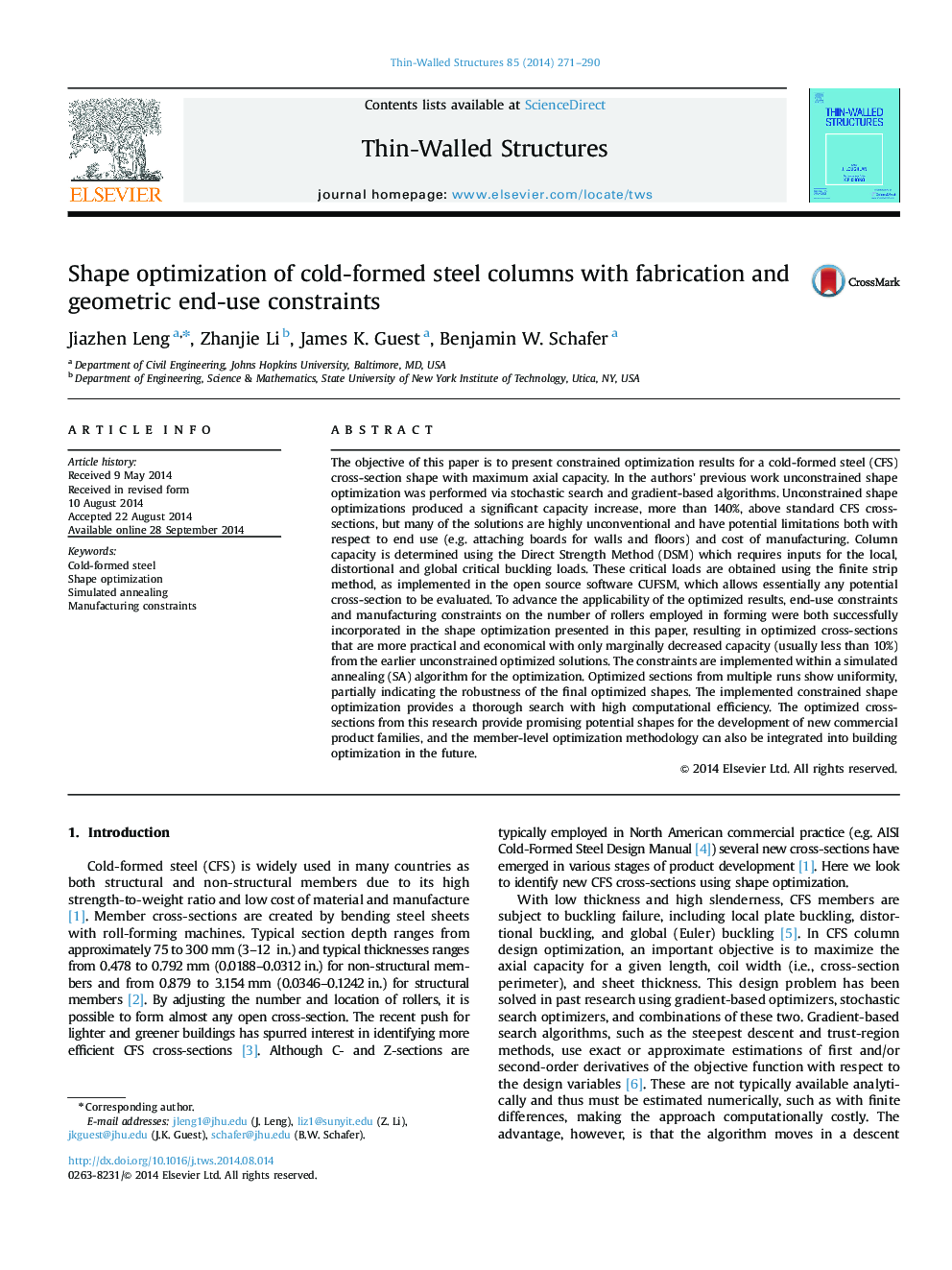| Article ID | Journal | Published Year | Pages | File Type |
|---|---|---|---|---|
| 308901 | Thin-Walled Structures | 2014 | 20 Pages |
•End-use constraints are incorporated in shape optimization of CFS columns.•Manufacturing constraints are incorporated in shape optimization of CFS columns.•Practical optimized cross-sections are found for CFS columns with various lengths.•Capacities of optimized designs drop marginally from unconstrained solutions.
The objective of this paper is to present constrained optimization results for a cold-formed steel (CFS) cross-section shape with maximum axial capacity. In the authors׳ previous work unconstrained shape optimization was performed via stochastic search and gradient-based algorithms. Unconstrained shape optimizations produced a significant capacity increase, more than 140%, above standard CFS cross-sections, but many of the solutions are highly unconventional and have potential limitations both with respect to end use (e.g. attaching boards for walls and floors) and cost of manufacturing. Column capacity is determined using the Direct Strength Method (DSM) which requires inputs for the local, distortional and global critical buckling loads. These critical loads are obtained using the finite strip method, as implemented in the open source software CUFSM, which allows essentially any potential cross-section to be evaluated. To advance the applicability of the optimized results, end-use constraints and manufacturing constraints on the number of rollers employed in forming were both successfully incorporated in the shape optimization presented in this paper, resulting in optimized cross-sections that are more practical and economical with only marginally decreased capacity (usually less than 10%) from the earlier unconstrained optimized solutions. The constraints are implemented within a simulated annealing (SA) algorithm for the optimization. Optimized sections from multiple runs show uniformity, partially indicating the robustness of the final optimized shapes. The implemented constrained shape optimization provides a thorough search with high computational efficiency. The optimized cross-sections from this research provide promising potential shapes for the development of new commercial product families, and the member-level optimization methodology can also be integrated into building optimization in the future.
